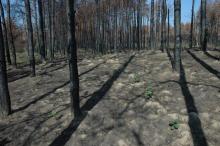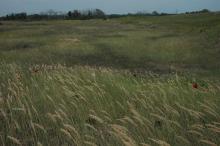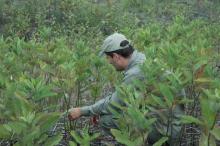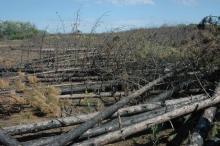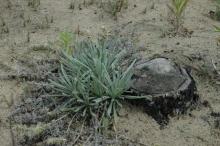n 2007 protected juniper-poplar forests and alien pine plantations were on fire near Kunfehértó-Kéleshalom. After the fire the monitoring of the regeneration was started in 2008 and since then it has been conducted once a year in both forest types. In the juniper-poplar forests we study the garsslands around 18 burnt and 18 unburnet junipers (along with adjacent reference grasslands) with 1m*1m and 5m*5m quadrats. In the pine plantations sampling is conducted in 20 plots on the top of the dunes and 20 plots between the dunes (along with the same number of reference grasslands) with 4m*4m.
JUNIFIRE - Studies on the regeneration and restoration constraints and potentials of burnt down alien pine plantations and open sand grassland-poplar-juniper woodland mosaics in Kéleshalom
Alien pine plantations (Pinus nigra and P. sylvestris) cover a considerable portion of potential sand steppe and woodland habitats in the Danube-Tisza Interfluve in central Hungary. While habitat conversion to pine plantation rarely occurs these days, existing pine plantations, once cut down, are usually afforested by pine again, since these habitats are considered unsuitable for other tree species (soil humus content is below 1%). However, recent concerns related to fire risk and nature conservation opened up the possibility of conversion of some of these plantations to more natural habitat types.
Potentials and constraints of regeneration processes of sand grassland vegetation following a fire in 2007 that killed pine plantations in the Kéleshalom Nature Protection Area in the southern part of the Danube-Tisza Interfluve are monitored. Studied factors are native and invasive species dynamics in relation to topography and distance to propagule sources. In a small scale experiment, the role of propagule limitation, pine litter and the presence of invasive species (Asclepias syriaca) on the vegetation recovery is further investigated. The role of juniper individuals in the vegetation composition of semi-natural open sand grassland-poplar-juniper woodland mosaics and regeneration dynamics following fire is examined by comparing burnt and unburnt patches with and without juniper.
